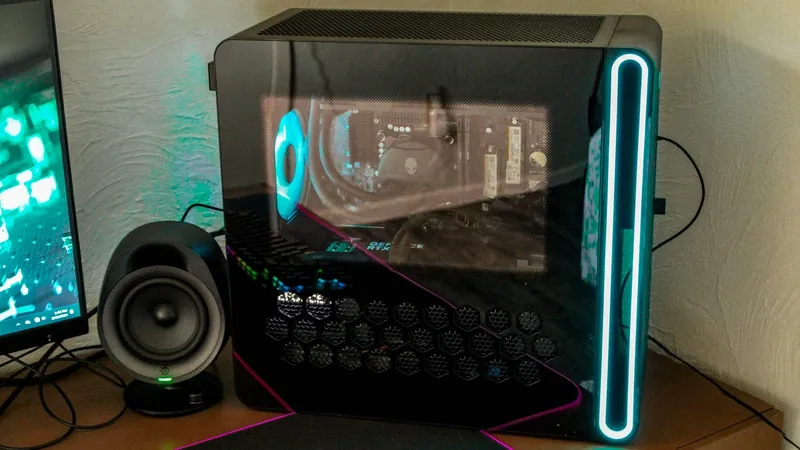
Remembering Ian Shipsey: A Visionary Physicist Who Transformed Our Understanding of the Universe
2024-11-06
Author: Mei
Introduction
In a tragic turn of events, the world of science has lost one of its brightest minds, physicist Ian Shipsey, who passed away suddenly at the age of 65. Renowned for his monumental contributions to particle physics, Shipsey developed silicon devices of exceptional precision that revolutionized the study of subatomic particle collisions and the light emanating from the most remote corners of the universe. His groundbreaking work unlocked secrets about the earliest moments of our universe, expanding our comprehension of cosmic phenomena.
Personal Journey and Challenges
Shipsey's personal journey was as remarkable as his scientific achievements. Struck by profound deafness after leukemia treatment in 1989, he navigated his condition with tenacity, receiving a cochlear implant a dozen years later. This technological intervention empowered him to successfully communicate, often leading those around him to overlook his disability entirely.
Scientific Contributions
Fueled by an insatiable curiosity, Shipsey tirelessly pursued the pivotal questions in physics. He didn't just inquire; he created the very detectors necessary to find answers. His significant contributions spanned multiple premier scientific facilities, including his two-decade involvement with electron-positron annihilation at Cornell University starting in the mid-1980s and his key role in proton collisions at the Large Hadron Collider (LHC) at CERN, beginning in the mid-2000s.
As a leading figure in LHC experimentation, Shipsey pioneered novel silicon detectors aimed at isolating rare decays of the muon, a fundamental particle that could hold insights into the asymmetries of the universe. His innovative spirit extended beyond particle physics; he played a central role in applying silicon detectors to capture light from the universe's farthest visible objects, contributing to the Vera C. Rubin Observatory LSST camera—a historic astronomical endeavor set to operate in Chile, after 20 years of development, aimed at decoding the mysteries of dark energy.
Exploring Quantum Entanglement
Towards the latter part of his vibrant career, Shipsey explored the potential of quantum entanglement—where interdependent quantum entities maintain their connection even across vast distances—to solve fundamental scientific and computational queries. His leadership in securing competitive funding for groundbreaking initiatives propelled several significant projects forward.
Early Life and Education
Born in Walthamstow, northeast London, Shipsey's academic journey was marked by determination. He was the first in his family to attend university, ultimately earning his physics degree from Queen Mary University of London in 1982. An early break from academia led him to volunteer with the Cyrenians, a charity for the homeless, where he deepened his commitment to societal betterment.
Career Trajectory
Shipsey embarked on his research journey at the University of Edinburgh, focusing on the NA31 experiment at CERN that examined kaon particle decays—a pursuit that helped unearth asymmetries vital to understanding why our universe is primarily composed of matter rather than antimatter. His personal and professional partnership with fellow physicist Daniela Bortolleto, whom he married in 1988, flourished, as they collaborated seamlessly throughout their careers.
Following his 1986 PhD completion, Shipsey transitioned to the United States, first taking a position at Syracuse University and later at Purdue University, where he and Daniela both secured tenure. His leadership of the CLEO experiment marked a pivotal point in his career, where he furthered the understanding of CP violation—the distinction between matter and antimatter.




 Brasil (PT)
Brasil (PT)
 Canada (EN)
Canada (EN)
 Chile (ES)
Chile (ES)
 España (ES)
España (ES)
 France (FR)
France (FR)
 Hong Kong (EN)
Hong Kong (EN)
 Italia (IT)
Italia (IT)
 日本 (JA)
日本 (JA)
 Magyarország (HU)
Magyarország (HU)
 Norge (NO)
Norge (NO)
 Polska (PL)
Polska (PL)
 Schweiz (DE)
Schweiz (DE)
 Singapore (EN)
Singapore (EN)
 Sverige (SV)
Sverige (SV)
 Suomi (FI)
Suomi (FI)
 Türkiye (TR)
Türkiye (TR)